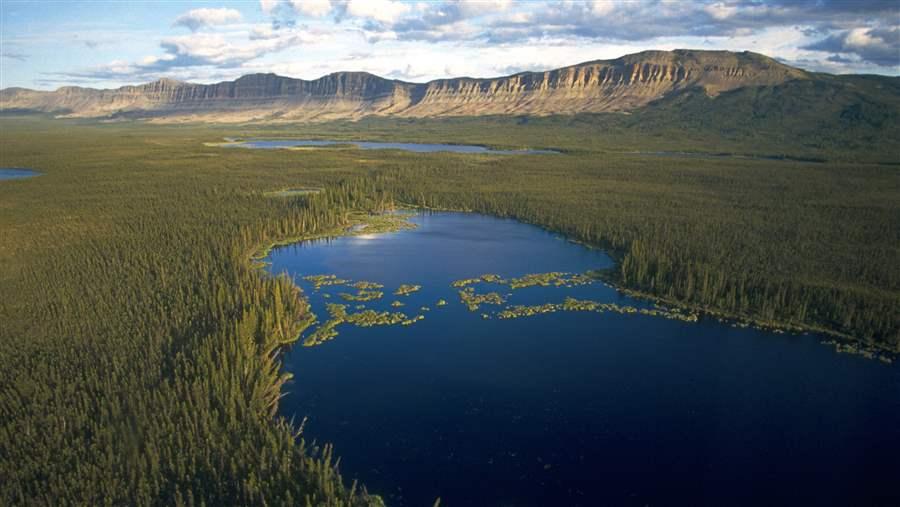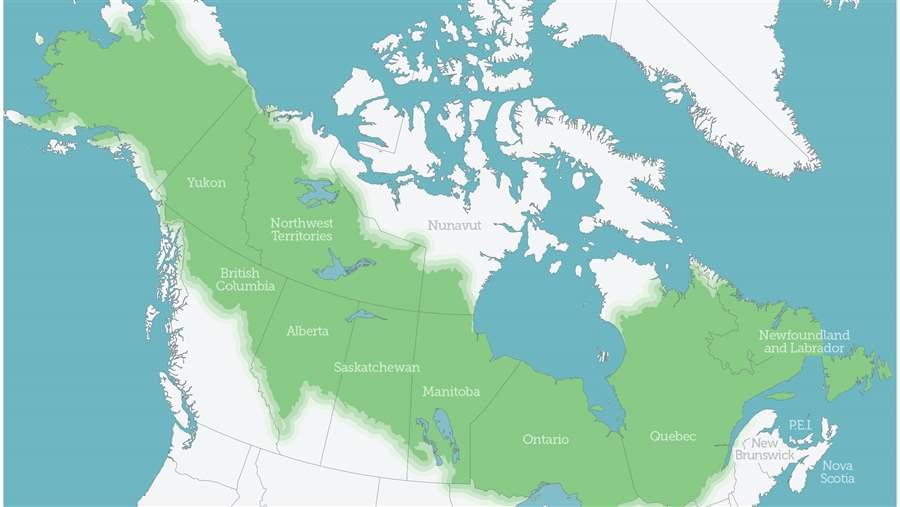Fast Facts: Canada’s Boreal Forest
Since 2000, The Pew Charitable Trusts has been working with partners in Canada to protect the boreal, the world’s largest remaining intact forest ecosystem. Here’s why its conservation is vital for the planet.
Canada’s boreal forest:
- Is the world’s largest intact forest ecosystem. It stretches across 1.2 billion acres (485 million hectares) of northern Canada, from the Yukon to Newfoundland and Labrador.
- Represents 25 percent of the world’s remaining intact forest, even more than the Amazon rain forest.
- Contains 25 percent of the world’s wetlands.1
- Includes more surface freshwater—about 200 million acres (81 million hectares)—than anywhere else on Earth.2
- Is North America’s bird nursery. Each year, 1 billion to 3 billion birds migrate north from the United States—and from as far away as South America—to nest in Canada’s boreal forest. Between 3 billion and 5 billion return south each fall after a successful breeding season.3
- Stores twice as much carbon per acre as tropical rain forests. In all, Canada’s boreal forests and peatlands lock in a minimum of 229 billion tons of carbon. Peatlands, also known as bogs and fens, are wetlands that include vegetation such as sphagnum mosses, shrubs, and spruce. This natural carbon storage helps cool the planet and provides a critical bulwark against climate change.4
- Is home to some of the cleanest and deepest freshwater lakes on the planet. Great Bear Lake, in the Northwest Territories, is considered the world’s largest unpolluted lake. Great Slave Lake, also in the Northwest Territories, is North America’s deepest.5
 Ducks Unlimited Canada
Ducks Unlimited CanadaAn aerial view of Oscar Lake, Northwest Territories. Canada’s boreal region stretches across 1.2 billion acres and is the planet’s largest remaining intact forest ecosystem.
Endnotes
- The Pew Charitable Trusts, A Forest of Blue: Canada’s Boreal (2011), http://borealscience.org/wp-content/uploads/2012/06/report-forestofblue.pdf.
- Ibid.
- Jeff Wells et al., Boreal Birds Need Half: Maintaining North America’s Bird Nursery and Why It Matters (2014), 7, http://borealbirds.org/sites/default/files/pubs/birdsneedhalf_0.pdf.
- Matt Carlson, Jeff Wells, and Dina Roberts, The Carbon the World Forgot: Conserving the Capacity of Canada’s Boreal Forest Region to Mitigate and Adapt to Climate Change (2009), 7, http://www.borealbirds.org/sites/default/files/pubs/report-full.pdf.
- The Pew Charitable Trusts, A Forest of Blue.












